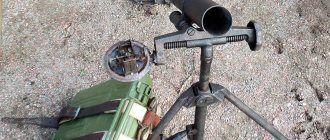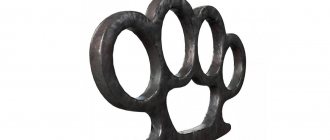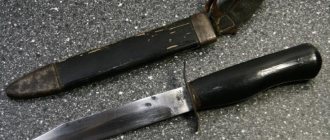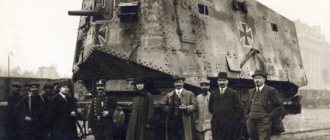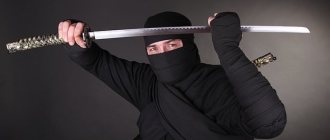Ancient tribes made raids and took captives, keeping their movements under control using ropes. After some time, wooden blocks appeared, which, for example, in Russia, were used for a long time. And with the production of iron, the first devices appeared to restrict movement - shackles (hand, leg, neck), and then handcuffs were invented to also limit mobility.
The first mass batch of steel bracelets was produced back in the 16th century. In 1912, this design was improved by Peerless engineers.
Purpose
According to Russian legislation, handcuffs are special equipment, and they do not belong to edged weapons, but they are considered prohibited means for mass sale. Purchasing and wearing them is possible only with a special permit; without it, handcuffs can be confiscated from civilians, so why run into trouble with law enforcement agencies.
Handcuffs are needed only for special purposes. Previously, even under the USSR, police patrols controlled the streets without the use of batons and the same bracelets, even a pistol was not always present in a holster and the streets were much calmer.
Now the police are in full uniform, the equipment includes a bulletproof vest, a baton, shackles, a machine gun, and a pistol.
Employees of the Ministry of Internal Affairs of the Russian Federation and departmental security can use all these devices against offenders in order to:
- limit the physical force of those arrested;
- prevent the possibility of resistance by the intruder;
- suspend the commission of illegal actions;
- deliver the violent offender to the police station.
Not only police officers use handcuffs; these devices can be used by bodyguards or security guards, but in compliance with strict rules.
The order of correct actions for private security company employees when using bracelets:
- The employee should warn the person or group of people about the possibility of their use, and give them time to comply with the requirements. The exception is the situation when the slowness of the security guard threatens his health and life or another person, or more severe consequences may occur.
- Employees should try to minimize harm to the health of the offender due to the use of such devices. If necessary, first aid is provided to the victim. In emergency situations, it is advisable to immediately call an ambulance and the police.
- Law enforcement agencies are notified of bodily harm caused by the use of special equipment.
These special means are carefully secured on the hands of the offender so as not to cause harm to the offender. The grounds for using handcuffs must be lawful, otherwise criminal liability is provided.
This category of employees undergoes special retraining over a certain period of time. There they perform standard exercises for private security guards and other persons with special statutory tasks.
The history of handcuffs
It is believed that handcuffs first appeared during the invention of metalworking. Then these were heavy shackles that were closed and removed only in the forge. These were so-called “handcuffs” without a key. Before this, ropes or other suitable objects were used to tie the hands of the detainees. All of these items had many shortcomings. Revolutionary changes occurred at the beginning of the 20th century, when a reusable mechanism in the form of bows was invented. They rotated freely, and the handcuffs themselves were adjusted to the size of people’s wrists.
What types are there
There are several types of these special equipment. The classic type of handcuffs consists of two metal bracelets, which are connected by two welded chain links. To latch the lock, a key is not used, the shackles are locked automatically, you just need to make sure that your wrists are not pinched. There are a variety of sizes of handcuffs, it's just that people are different and it is difficult to secure the large type of handcuffs on small hands.
There are Russian types of handcuffs, but there are also foreign ones.
American:
- Peerless in translation sounds like “incomparable”. Patented in 1912, the patent became invalid in the 70s, which made it possible for other companies to copy them. These devices have anti-squeeze pins and grooves on the arc; the existing lock blocks their further advancement, which prevents excessive tightening. The latch is activated by pressing the pin with a special pin on the key.
- Model No.-100. Widely used for games. This type of bracelets does not cause any injury. Easily opened with folded paper, even when your hands are behind you.
- No.-3000 with loops. This type has a more rigid fixation of the wrists. The lock on them can be located on the front, which makes opening it easy, but if you try to open them from the back, then skill will be required.
- Iron-Masters (Iron Lords). There is a complex lock built in that you just can’t open. They are massive; the long chain provides greater freedom of action.
- Darby – translated as “hand shackles.” It is known that the appearance of these ancient handcuffs served as an example for all manufacturers for about 300 years. In some states of America, they are still used in police work. They close without a key, but they open by screwing it in; they cannot be opened quickly, even if the offender has the key. At first they were produced without fitting to the wrists, in various sizes, for men, women and children. However, not all men were suitable for men's types of handcuffs. Nowadays they use mainly universal ones.
- Game handcuffs. Most often used for sexual games. They are sold in adult stores and, of course, permission is not required.
Russian species:
- Tenderness – 1. Produced by a Russian company of the same name, used by the police. The prototype for their production was the American “incomparable” type of 1912. But there were still some differences: the chains were longer, the bracelets were matte. They can be opened not only with a key, but even with a paper clip.
- Tenderness – 2. Metal handcuffs. The lock prevents excessive tightening and can be activated by pressing in the pin.
- Samples from the Soviet era. They started making them in the 30s of the last century and received the name “BR” - hand bracelets. They have been slightly modified, but are still used by law enforcement agencies. They are characterized by heavy weight, bulkiness, lack of aesthetics, and have a strong spring. The chain links are welded, with anti-spin and locking mechanism.
- Model "BR-2M". This is a simplified and cheaper option; there is no anti-spin or locking mechanism. The latch mechanism is the same as that of “Tenderness - 1”, with a weak spring, the slightest force and they will latch tightly.
- The crab is a Russian-made device with large arches, similar to the Western model OVERSIZED, which means “enlarged”. Heavy and crudely made. The closing bow has several large teeth, but the latch mechanism only has one tooth. Thanks to the protruding outward latch, the bracelets can be fixed without using a key; the fixation is removed by turning the key, as when opening. An anti-squeeze groove was placed on one side of the arc, but it does not perform its function well. The key is made from a flat metal plate. Because of their large size, they are too big even for adult men. This model is easy to open with any hairpin.
- Operational handcuffs BRS-2V, a widespread Russian model. This is a two-link device connected by a chain, made of blued steel. The device differs in that if the bracelets are slammed and locked, they do not squeeze the hands too much.
- Finger cuffs. These are modern handcuffs made in Russia. They are worn on the thumbs. They are opened using a key that has a pin that activates the lock.
- Fixing metal handcuffs without chain.
- Screw model. It was not possible to establish their origin for certain. There are differences from other types - this is a lock, blind holes instead of teeth, pins in place of the latch with teeth, which prevents them from simply being pressed out. Although the spring is not elastic, they snap into place easily. You can open them with a key using a screwing motion, but due to the inconvenient location of the lock at the end, this will be difficult to do, especially when the bracelets are worn on both hands.
Operation of special equipment is possible at temperatures from -30 to + 40 degrees; they are stored in a special place for this purpose.
During a break from the main activity, handcuffs are cleaned and lubricated. Timely maintenance contributes to the long operation of these devices.
Classification of lock opening methods
The easiest way to solve the problem of how to open handcuffs without a key, if you are new to this matter, are bracelets without an active latch, which, as a rule, is located on the plane of the handcuffs below the lock. As noted above, the exception of the lever being recessed into the hole indicates the inactivity of the latch. In addition, some models of handcuffs do not contain it at all.
In any case, the process diagram is as follows: the teeth of the moving part contact the grip, as a result of which the pawl falls and the handcuffs close. The key lifts it and the mechanism opens. This means that it is possible to fake the pawl manually, by moving the wire between the teeth and then grabbing it.
If there is a lock, it will not be so easy for beginners to disable it, but amateurs will carry out this operation without much difficulty by turning the tool counterclockwise
It is important to note that extreme care must be taken when turning to prevent the lock from re-engaging. Only professionals in this matter will be able to open the BRS-2 handcuffs, because their lock has a particularly complex structure. The corresponding process is described above
The corresponding process is described above.
How to put on special bracelets correctly
They mainly handcuff citizens who have broken the law. To do this, you must follow a certain sequence:
- before putting on the shackles, you need to fully open the rings so that it is convenient to fix them on your wrists;
- the offender’s hands must be placed behind his back, so he will not have the opportunity to slip out of the handcuffs on his own;
- Having put them on your hands, you should fix the rings tightly and then slam them shut;
- The device closes automatically, which minimizes the time spent on neutralizing the intruder.
When closing, the size of the rings is formed; thanks to a special mechanism, it does not increase or decrease. After fixing the rings on the hands, the tightness of the clamping is checked to prevent pinching of the wrists.
Typical exercises
The electroshock device (ESD) is located on the table 2 meters from the mannequin. The person being tested is located at the table, opposite the dummy. At the command of the supervisor “Start the exercise,” the person being tested takes the ESA, puts it on alert and warns of his intention to use it with the words “Stop, I’ll use a weapon.” Applies ESA by touching one of the effective lesion zones on the dummy, as well as turning the discharge on and off. After this he reports: “I’ve finished the exercise.” The exercise time is 15 seconds.
We recommend reading: Design of buildings on a summer cottage in 2020
The worker being tested is 1.5 meters opposite the dummy. The handcuffs are on the belt in a case. At the supervisor’s command “Place handcuffs in front (or behind),” the employee being inspected takes the handcuffs out of the case, approaches the mannequin and puts on handcuffs depending on the task assigned by the supervisor (front or rear). After that he reports: “The handcuffs are on.” Execution time 20 seconds.
How to open special equipment
Most of these designs have a lock out of the reach of the offender's hands, which are in bracelets. There are models with a lock located on both sides, and this increases the possibility of hacking. Usually the device is opened with a key, but this can also be done using improvised means:
- A master key for handcuffs.
- With a hairpin.
- With a pin.
- Wire.
There are also craftsmen who can slip out of handcuffs, but to do this you need to have unusual flexibility in the joints of your hands. There are models, unfortunately, in which the handcuff design allows this to be done.
If there is a lock, then there is a way to open it. To do this you will need the following:
- Hands should be placed in front.
- You need a suitable tool, preferably metal, so that it does not break when opened.
- If, for example, a wire is found, then it needs to be bent at a right angle. This will allow you to enter the lock mechanism. Bend the wire at a distance of 5 mm from its end.
- Now they begin to open the lock, the mechanism is different, so you will have to spend some time to free yourself from the handcuffs.
Opening complex structures takes more time and sometimes you cannot open them with a simple wire.
Instructions and use of available tools
To open the lock, you need to know the weak points of the structure (Figure 2).
Figure 2. Design and weak points of “bracelets”
There are three vulnerable spots that will help you understand how to remove handcuffs without a key:
- Chain:
To increase your chances of success, you need to put your hands in front of you. This makes working on the master key easier and faster. Yes, you will need to make it yourself, which is another reason to carry a strong, thin paperclip. You can also deliberately make this device and wear it discreetly in the lining of your shoes, outerwear or sweatshirt. - Tooth Retainer:
Attached with a toothed piece that retards the movement of the staple. It is a vulnerable point due to its mechanical nature. If the lever holding the bracket is not fixed, then it will be enough to pry it off with a paper clip or a thin piece of metal; - Safety lever:
just bend it with a master key and break the locking mechanism.
Handcuff lock
The latch is a movable part that blocks the movement of the locking arc by fixing the position of the gripping teeth. It is locked by pressing the master cylinder, and unlocked in a manner similar to the catching teeth (Figure 3).
Prohibition on use
The taboo on the use of shackles applies to pregnant women, citizens with obvious signs of disability and minor citizens, but unless they resist, and then the “Irish handcuffs” will turn out to be real for them.
Irish handcuffs are a joke used to refer to hands occupied by bottles of alcohol. Devices are not used during peaceful rallies and demonstrations unless the operation of vehicles, communications, and organizations is disrupted.
The use of handcuffs, as it may initially seem, is not a simple matter in reality.
It requires skill and dexterity, otherwise you can get injured and even break your own or the offender’s arm.
Over the centuries, hand bracelets have not lost their relevance. Since the beginning of their release, the shackles have changed, but not dramatically. They are an integral attribute of law enforcement and security agencies. We must assume that the shackles will be used for many centuries to come and their history is not over yet.
What is shibari
The art of shibari originates from the Japanese martial techniques of hojo-jutsu binding. Their goal was not only to immobilize the captive, but also to emphasize his social status - for this, different methods of binding were used. With the end of the wars, bondage techniques migrated into everyday life: women replaced the captives, and the process itself began to be valued for the beauty of bondage.
Now shibari is, first of all, the art of aesthetic rope bandage, which is not devoid of meditative properties. And of course, it has an erotic connotation: shibari can be used to fix a partner (usually, but not necessarily, a woman). In addition, individual elements of the harness can affect its erogenous zones.
How to apply this technique in your personal life is up to everyone to decide for themselves. The main thing is to remember: above all else is mutual desire and, especially at first, caution. Everything else largely depends only on your imagination.
tumblr.com
Security guard 4th grade - exam
- Registration and processing of personal data of persons arriving at a protected facility (without confirmation of consent to this by visitors in the form of signing a special document or a corresponding signature in a log) can be carried out by a security guard under the following conditions:
- The security guard verbally informed visitors of the protected facility that his job description established the obligation of visitors to provide their personal data for registration and processing (this is sufficient, since his job description was approved by the head of the private security organization and agreed with the customer of security services).
- The security guard provided visitors to the protected facility with the opportunity to personally familiarize themselves with the text of his job description, which stipulates the obligation of visitors to provide their personal data for registration and processing (this is sufficient, since his job description was approved by the head of the private security organization and agreed with the customer of security services).
- Before entering the protected area, information is posted about the presence of rules at the facility, established by the customer of security services and providing for the registration and processing of personal data of visitors by the security guard (this is sufficient, since persons who have read the rules and confirmed their consent to their implementation by the fact of passage, according to the Civil Code of the Russian Federation are considered one of the parties to a written agreement for access to the facility).
- Additional (removable) elements of armor protection that can be equipped with all types of protective vests (with the exception of some models of concealed wear) include:
- Replaceable hard spine pads, protective masks, protective gloves, elbow (ring) protective pads.
- Neck and shoulder pads, groin pads, replaceable hard protective elements (armor plates).
- Special armored radios, protective tablets (armored), special protective boots.
In a shirt and hat with rabbits
About the British illusionist Shahid Malik, who also performs escape tricks, his colleagues say that he was born wearing a shirt and a top hat with rabbits on it. Over a fairly long career - Shahid began performing in public in 1972 at the age of 18 - the artist managed to survive by miracle more than once. So, after the failure of the “Escape from the Fire” trick, the burns were so severe that doctors did not believe that the illusionist would survive. During the “Freedom from a straitjacket” routine, the rope on which he was hanging broke several times and Shahid fell from a height of 12 m. The mentioned stunt brought him two world records - for the highest performance (the master frees himself from a straitjacket at a height of 548 m, tied to a helicopter) and in the fastest way (all this takes Shahid 13 seconds).
Practical part
Practical skills testing is distributed by category.
For all ranks of security guards, there is a test of skills in handling a protective helmet, body armor, rubber truncheon and handcuffs. Upon successful completion of the theoretical exam, the security guard is asked to draw a ticket on which one of the special means listed above will be written. Next, for the fifth rank of security guard, there is a test of skills in handling civilian weapons, and for the sixth rank, with service weapons.
Each region and exam center interprets certain practice rules differently, but we will still try to highlight the most common mistakes made by security guards.
Protective helmet.
If you get a protective helmet, then before you begin the exercise, you should make sure that you are not putting it on backwards. Of course, this is not a firefighter’s helmet, where the front part is easily determined by the protective glass. So take your time, carefully examine the helmet before the exercise, try to unfasten and fasten the helmet clasp.
Body armor.
A common mistake when putting on body armor is that the fasteners of the body armor are at the back. At the same time, the examinee begins to rotate it on himself, losing precious time (no more than 20 seconds are allotted for each exercise).
Rubber stick.
You will be asked to hit the dummy 4 or more times (depending on the examiner's mood). You cannot hit the head, neck, clavicular area (often the examiner asks to show this place), stomach, or genitals.
You do not need a handcuff key to handcuff the mannequin. Most often, handcuffs are triggered instantly when struck on the wrists. Also, do not put pressure on your wrist with the handcuffs; the rings of the handcuffs should turn freely.
We have made a brief overview of the practical part of the exam testing skills in handling special equipment. By studying in Penza, you will be able to master all the skills well and successfully pass the qualifying exam.
Security 4th grade exam
All questions have been updated. Editorial June. Dear site users! If you have new security guard tickets for the year, please email them to tests-exam tests-exam. Site administration. Excellent site, this is what I needed, many thanks to the developers for helping the poor guards Igor.
The 4th category security guard exam online randomly selects from the total number of questions, three questions on legal training and one on all other disciplines; questions on fire training are not included in the 4th category security guard exam. Anyone who wants to become a 4th category security guard at a private security company, as well as existing security guards, with the help of our service can gain knowledge in the field of private security activities and be well prepared for the first or next qualifying exam.
